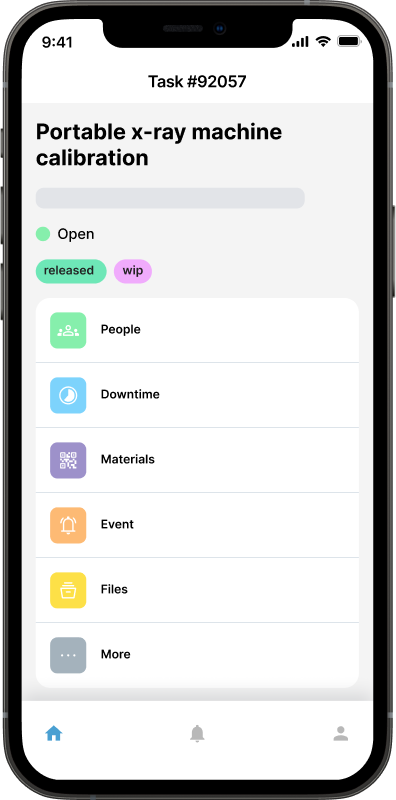Implementing Lean Maintenance with CMMS Systems Software: A Practical Guide

Optimizing operational efficiency is crucial in today's competitive environment. Lean maintenance maximizes asset reliability and performance by systematically identifying and eliminating waste in maintenance operations to decrease downtime, costs, and resource utilization.
In addition, the computerized maintenance management system (CMMS) manages, tracks, and automates maintenance tasks such as work order processing, asset management, and scheduling.
Combining these ideas unleashes their power. Lean provides the strategic concepts for efficient maintenance, but a CMMS gives the infrastructure and data to apply, monitor, and sustain these practices. Lean transformation requires uniformity, visibility, and data-driven decision-making, which CMMSs provide.
This practical guide helps maintenance professionals and companies apply Lean maintenance principles by strategically using CMMS software. We offer solutions for more effective, dependable, and waste-free maintenance.
Understanding the foundations
The global computerized maintenance management system (CMMS) market was worth USD 1035.94 billion in 2024 and is expected to increase at 9% to USD 2249.94 billion by 2033, according to statistics.
In line with this, implementing Lean maintenance with CMMS systems software becomes even better for a more systematic organization.
Before starting the integration process, you must grasp Lean maintenance and CMMS software's functional capabilities. This section describes the fundamentals of Lean and the CMMS components needed to apply it.
Key Lean maintenance principles
Eliminate waste (Muda): Eliminating waiting, overproduction, wasteful motion, superfluous inventory, and faults.
Standardize work: Establishing repeatable maintenance methods for consistency and quality.
Continuous improvement (Kaizen): Promoting incremental process and performance improvements.
Focus on value flow: Keeping maintenance work moving without delays or bottlenecks.
Visual management: Using dashboards and status boards to highlight issues, performance, and procedures.
Core CMMS capabilities relevant to lean
Job order management: Finding waste and standardizing tasks requires tracking job initiation, assignment, status, duration, and cost.
PM/PdM scheduling: Using time, consumption, or condition data to plan maintenance to reduce reactive effort and optimize asset health.
Asset management and hierarchy: Organizing assets with specs, history, and BOMs for planned maintenance and failure analysis.
Inventory and spares management: Tracking parts usage, stock levels, and costs to optimize inventory, decrease holding waste, and ensure scheduled work parts availability.
Data reporting and analytics: Identifying waste and assessing improvement by revealing maintenance performance, prices, failure trends, and resource use.
Planning for implementation
It takes careful planning to deploy Lean maintenance using a CMMS successfully. Before deployment starts, this important planning stage establishes the course, pinpoints areas that require improvement, and guarantees that the required tools and resources are available.
Defining objectives and KPIs
Clearly state what "Lean" means to your particular company.
What are the main objectives?
Cut down on particular wastes (such waiting times and superfluous inventory)?
Enhance the MTBF (mean time between failures)?
Extend the time spent by the technician using a wrench?
Establish quantifiable key performance indicators (KPIs) in line with these goals. These measurements will direct the process and assess its effectiveness.
 Assessing the current state
Assessing the current state
Prior to applying Lean principles, you need to be aware of your current situation. Make a thorough evaluation of your present maintenance procedures, workflows, and output.
This entails mapping value streams, assessing the data that is currently available—or not—and locating waste (Muda) hotspots. The foundation for improvement initiatives is this baseline.
Building the implementation team
Put together a multidisciplinary group that reflects important stakeholders. This usually includes IT support, operational staff, planners, managers, maintenance technicians, and maybe finance or purchasing.
A diversified team guarantees support, gathers various viewpoints, and contributes the requisite knowledge to the stages of planning and implementation.
CMMS selection/review
Assess the degree to which your prospective or existing CMMS supports Lean principles.
Does it have strong PM/PdM scheduling features?
Is it simple to monitor labor and part utilization in relation to work orders?
Does it provide dashboards and configurable reporting for performance tracking and visual management?
Make sure the CMMS platform you have selected can function as the operational foundation for your Lean projects.
Implementing Lean maintenance with CMMS
The planning stage has provided you with a team and defined goals. It's time to concentrate on the instrument itself to close the gap between strategy and action. This section outlines the concrete procedures for setting up and using your CMMS software to actively apply Lean maintenance principles once the fundamentals have been established and the plan has been established.
Finding and utilizing the top CMMS systems software is essential since the capabilities of the selected system have a direct bearing on how well Lean concepts can be implemented. Choosing a platform with strong features is a crucial first step in facilitating data-driven decision-making and standardized processes, which are cornerstones of Lean adoption.
It addresses the crucial human component of adoption, system configuration for streamlined procedures, and necessary data preparation.
Data migration and standardization
The foundation of a successful CMMS and Lean operation is accurate and uniform data. This includes transferring historical data, Bill of Materials (BOMs), maintenance protocols, and current asset information into the CMMS.
To enable trustworthy reporting and analysis that is essential for spotting waste and gauging performance, make sure the data is clean, consistent, and adheres to established standards (such as naming conventions).
Configuring CMMS for Lean workflows
Adjust your CMMS configurations and procedures to conform to lean concepts:
Work order management: To reduce delays and maximize resource allocation, set up clear procedures for submitting work requests, prioritizing them (based on impact or value), standardizing job plans, and scheduling them effectively.
Setup for preventive/predictive maintenance: Create thorough PM schedules according to usage or time, and incorporate PdM data (if any) to proactively handle possible problems and cut down on wasteful, reactive breakdowns.
Inventory optimization: To minimize excess stock (waste) and guarantee part availability for scheduled work, use CMMS tools to maintain spare parts inventory, define minimum/maximum levels, monitor consumption, and control purchasing.
Resource management & labor tracking: Set up the system to precisely record the amount of time spent on particular jobs. This information is essential for determining bottlenecks, gauging efficiency, and figuring out the actual cost of maintenance.
Analytics & reporting: Create dashboards and reports that offer insight into important Lean KPIs, such as wrench time, MTBF, OEE data, and reactive versus proactive work. Data-driven decision-making and visual management depend on these reports.
User training and change management
Adoption by users is essential for successful deployment. All CMMS users (technicians, managers, and planners) should receive thorough training on how to operate the system within the framework of lean workflows.
To overcome opposition, explain the "why" of the changes and cultivate a culture that supports data-driven improvement. Combine this with a strong change management plan.
Lean maintenance as a solution to enhance CMMS systems software
Using CMMS software strategically greatly increases the effectiveness of implementing Lean maintenance principles. Improved asset reliability, lower operational waste and costs, increased maintenance efficiency, and data-driven decision-making are just a few of the observable advantages that result from the combination of Lean approach and CMMS capabilities, as this guide has explained.
Nevertheless, implementing Lean maintenance with a CMMS is a process that calls for constant dedication and advancement. Maintaining the improvements and finding new areas for optimization requires routinely evaluating procedures, examining CMMS data, and modifying workflows.
In the future, CMMS integration with IoT, AI, and advanced analytics presents intriguing opportunities for even more automation, proactive waste removal, and predictive capabilities, hence reinforcing Lean maintenance as a fundamental component of operational excellence.
Adopting this integrated strategy puts businesses in a successful long-term position in a challenging environment.
Start your free Maintainly trial today to experience the benefits of CMMS.

